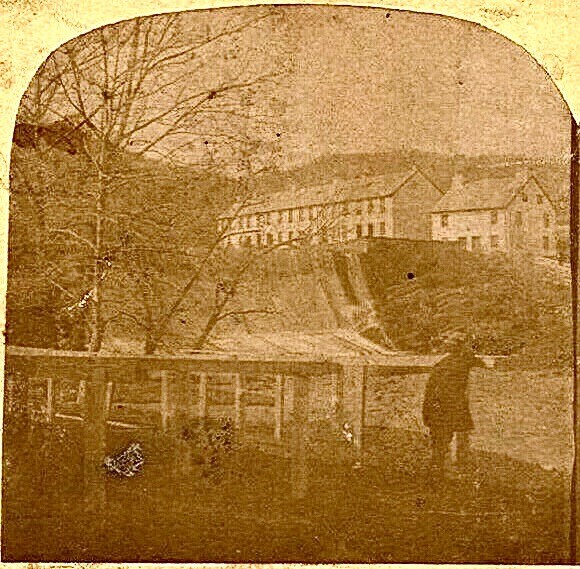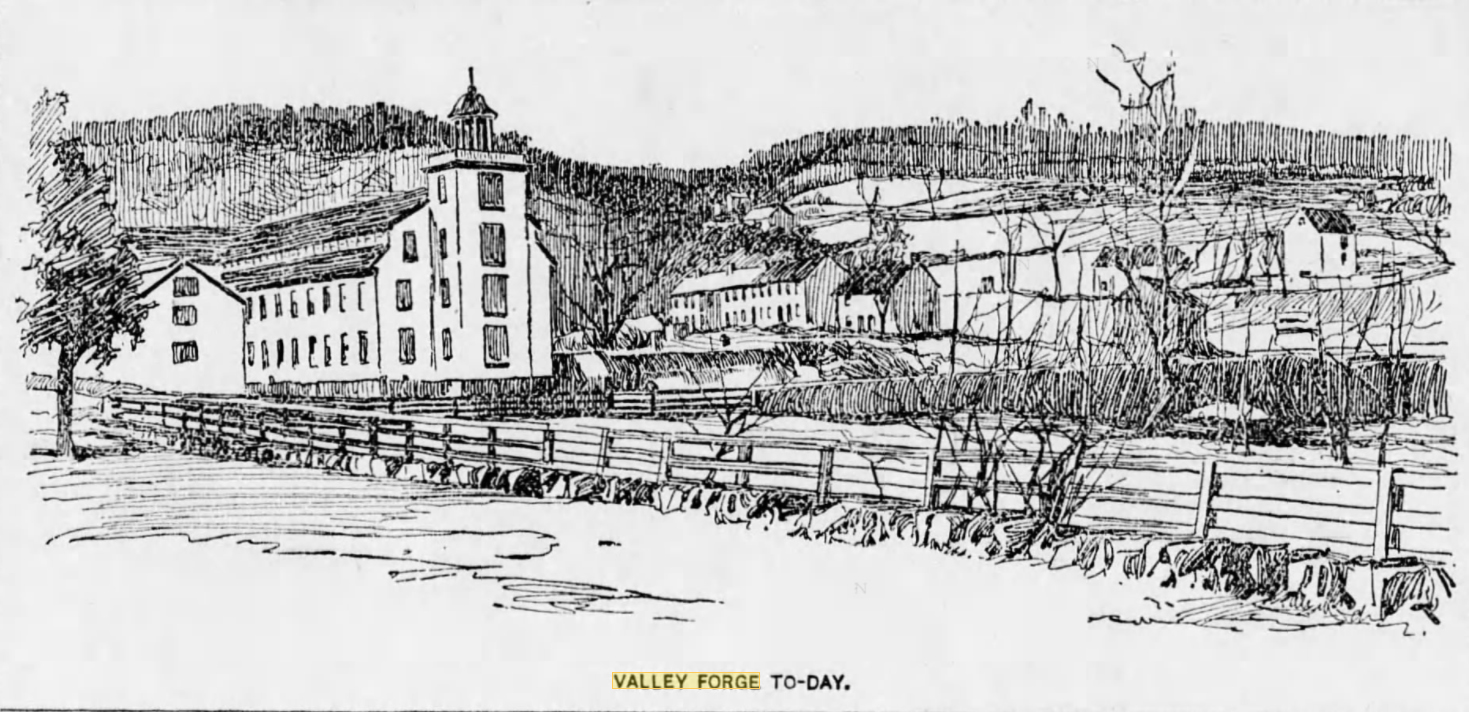 |
|
Tredyffrin Easttown Historical Society Home
: Document Collection Home
Use the links at the left to return.
|
Document Collection |
The Langenheim photo
– an early photograph of Valley Forge |
.jpg) The photo is what is referred to as a “stereoscope”. Stereoscope photos have two almost identical side-by-side images that were viewed using a device called a “stereoscope”. Since the two views were taken at slightly different angles, when viewed through the stereoscope they provide a three-dimensional view. Stereoscope views were highly popular in the mid to late 19th century. The stereoscope card discussed in this article is an original print made by the “American Stereoscopic Co.”, printed by “Langenheim, Lloyd & Co.” This was a partnership between photographers (and brothers) William and Frederick Langenheim, and William Lloyd. The Langenheim brothers were from Germany and immigrated to America in 1840 where they settled in Philadelphia (Cary Hutto, Historical Society of Pennsylvania). This card is copyright dated 1858. The partnership with Lloyd dissolved by 1859. The Langenheim brothers printed several American landscape view stereoview cards in the mid-19th century. These cards were printed using photographs taken during the mid-1850’s travels of the Langenheim brothers in the United States. In comparison, the earliest photographs taken in the United States were in the 1840 decade. This photo is quite early in the overall timeline of photography in America. In fact, this photo was likely taken less than 80-years after the time of the Valley Forge Revolutionary War encampment! This stereoview photo is the only original example of this particular view known to date. Certainly, others must exist, but it may be a rather rare photo. Improving the quality of one photo of the pair produces this more detailed image:  The building on the right is the Riddle Mansion / McIntosh’s Quarters, which was torn down in 1907. The building on the left became what is now known as the Patriotic Order (POSA) building. More details on both buildings can be found here. The dam was originally built in the late 18th century, but was rebuilt a number of times as described in The Valley Forge mill dam. Here is a similar view from a 1893 newspaper article1 showing the cotton mill in the foreground as well as the buildings shown on the Langenheim photo in the background:  A summary of the Industrial History of Valley Forge in the 1800sAfter the Revolutionary War, in the late 1780s, a new dam was built across Valley Creek to service a forge and a rolling and slitting works. In 1806 Joseph and Sarah Potts sold off a larger part of the area around Valley Forge, comprising nearly 400 acres of woodland, but excluding the core area around Valley Creek of 113 acres. Joseph Barnes purchased this larger tract of 400 acres in 1812 and subdivided it, selling the pieces off between 1812 and 1816. This shaped the present village of Valley Forge. In 1812 John Rogers and Julius Malin purchased the Old Forge at Valley Forge and its associated property of 113 acres, and in 1816 John Rogers became the sole owner when Julius Malin sold off his half share of the property. John Rogers developed the first woolen and cotton mill at Valley Forge over the next couple of decades. In 1836 he sold off the business and died soon afterwards. His son, Charles H. Rogers, purchased the mill in 1844. He appointed a series of managers to run the mill. Charles H. Rogers died in 1886; the mill no longer being operational. Notes and References
|